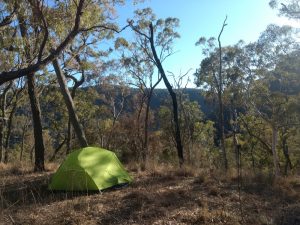Goals, Outcomes and Benchmarks
There is too much emphasis these days on outcomes. If you work for a government or corporate organisation, you’ll likely have KPIs (Key Performance Indicators) to aim for. Even if you work for yourself, you’ll be required at some point to reach targets related to income, funding for a project, or your client’s benchmarks. Perhaps you set specific markers for yourself in your work or personal life. Whatever label you slap on them, they’re simply ‘goals’. And success is all about reaching your goal. But have you failed if you don’t reach your goal?
The Benefits of Having a Goal
Not everyone is a fan of goal-setting. Personally and professionally I love them. However I’m very choosy about what goals I commit to, as well as the finer detail that goes with them (that is, the who, how, why, when, where, what and how of the goal). I believe that having a goal to aim for can give you purpose, focus, motivation, structure, and a feeling of success when you’ve reached it.
Failing to Reach Your Goal
I also know what it’s like to NOT reach a goal. In fact there are many goals I haven’t reached. Do I consider myself a failure because I haven’t reached those goals? Definitely not. There’s much more to a goal than the final outcome (despite what business model you might be working under!)
Goals include the nitty gritty mentioned above – the who, how, why, when, where, what and how. If you only look at the ‘what’ factor (that is, the desired outcome), then you’re selling your goal short.
Real-life Examples of Failing to Reach a Goal
Overnight Expedition Fail #1
Last year I set off on an overnight backpacking trip to reach a remote bush camp on an escarpment with a small group. We knew that others had been there before. We even had some trail maps of where they’d been although we found very little other information about the area. We began our trip on an established footpad then veered uphill very steeply off track as we navigated along a ridge line. The going was very tough. There was huffing and puffing; tears; and many self-proclaimed moments of “I can’t do this!” After hours of sweating it out we realised we were simply not going to make it. The route we’d taken was described somewhere as ‘moderate’ but it was nothing like my idea of moderate at all! My new grippy-soled Merrill’s were no match for the steepness of the terrain and I couldn’t get the image of myself sliding uncontrollably down the mountain out of my mind. As dusk arrived and we were still miles away from our destination, we chose to retrace our steps back to a small saddle and set up camp for the night.
As it turned out, camping here in the middle of nowhere was the most magical experience! Stars and night sounds accompanied our tired bodies and minds as we settled down to rest after one of the most gruelling walks I’d ever done. Disappointment called loudly, but I put it in the background, completely mesmerised by what was before me.
Did I fail? Yes, it’s true I failed to reach the destination at the time I planned, but I did not fail in every other aspect of the goal. I tried my hardest on this walk, gathered more information about the terrain, discovered that having a rope would have been handy to navigate some of the steep sections, and I accidentally uncovered the world’s most amazing remote camping spot!

Overnight Expedition Fail #2
So gruelling was this trip that I wasn’t interested in making another attempt of this same route. However last week the opportunity arose to try a different route …. to the same destination. Hmmm ….. this could be interesting! So with backpacks on, new maps and routes, a conversation with the Park Ranger to gather more local knowledge, some added confidence, and we were off. We even organised a small water cache for ourselves about 6kms from where we left our car in case we needed it on our return trip. Lesson learned from previous trip!
This time the terrain was not steep and slippery. It was rugged in a different way. Following old logging roads through rainforest proved so slow that it was almost impossible. Our planned route was entirely overgrown with woody vines, weeds, stinging trees and thickets. Navigating using map and compass seemed impossible in the thick rainforest, and using GPS was also haphazard with the dense canopy disrupting satellite communication. Progress was terribly slow. Climbing and untangling, diverting and problem-solving, re-calibrating and double-checking. We gradually made our way through the jungle.
Once again as the sun dropped low in the western sky, we acknowledged we’d failed to reach our destination once again. We’d need at least one more full day of navigating and pushing through scrub and forest to get there at this pace.
Did I fail? Yes, it’s true I did not reach the destination in the allotted timeframe, but in every other aspect I experienced success. I’d tried something new, hadn’t given up, approached each problem that arose with calmness (well, almost!), deeply appreciated the majesty of the rainforest around me, and felt connected with all who had been here before me, and all who would come after me.
Not reaching your goal does NOT equal failure!
So in my opinion, if you set a goal and don’t achieve it in the way you planned or in the time frame you set, that does NOT mean you’ve failed. It simply means you haven’t arrived there yet. It’s an opportunity to learn, re-assess, and redesign. Sometimes it’s an opportunity to say “Actually, that goal isn’t what I want after all. I’m going to change the goal post to suit me, rather than changing myself to suit the goal post.” If you don’t reach your goal, it’s not an indication of failure at all. It’s an opportunity. Go grab it!

Discovering mountain biking as life’s ultimate parallel universe in her middle age, Kathryn Walton shares information and reflections in ‘Daisy Spoke’ that inform, inspire and empower women to a healthy and active lifestyle.


 So first of all, make sure you GET THE BIG ROCKS IN YOUR LIFE FIRST. They are your priorities so take steps to make sure you allow plenty of time and energy for them. Next put in your medium-sized rocks. Your small rocks go in after that and will be able to settle into the spaces between the bigger rocks. You can be more flexible with how they fit into your life. Next comes the sand. These things will be able to flow into the spaces that you have left. If there isn’t time and energy for them right now, that doesn’t matter. When things settle, they’ll have a place in your bucket once again.
So first of all, make sure you GET THE BIG ROCKS IN YOUR LIFE FIRST. They are your priorities so take steps to make sure you allow plenty of time and energy for them. Next put in your medium-sized rocks. Your small rocks go in after that and will be able to settle into the spaces between the bigger rocks. You can be more flexible with how they fit into your life. Next comes the sand. These things will be able to flow into the spaces that you have left. If there isn’t time and energy for them right now, that doesn’t matter. When things settle, they’ll have a place in your bucket once again. 